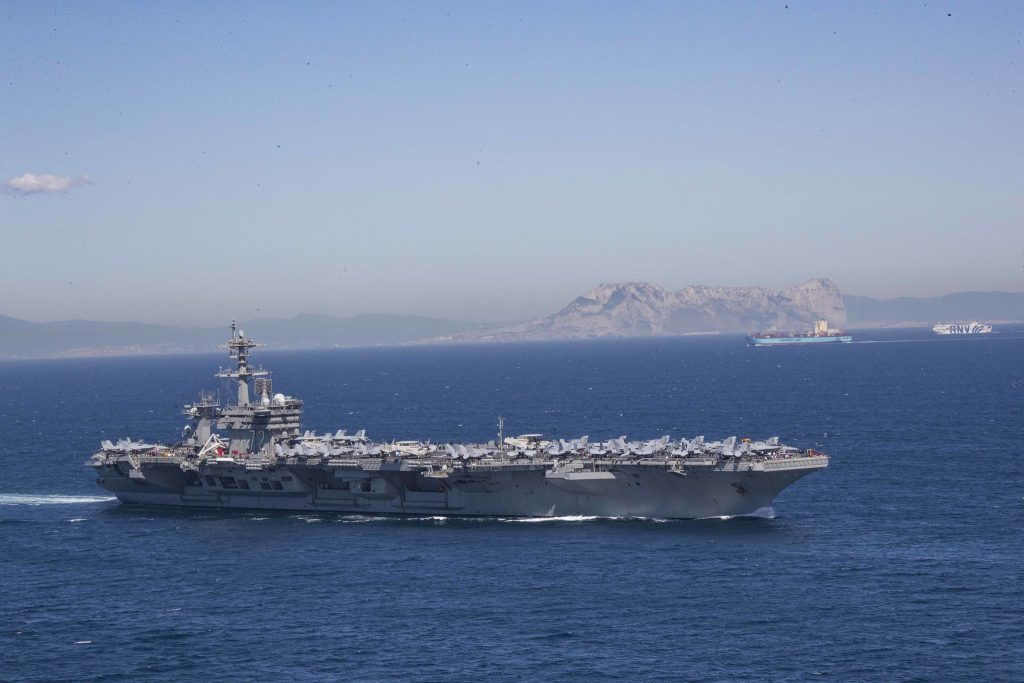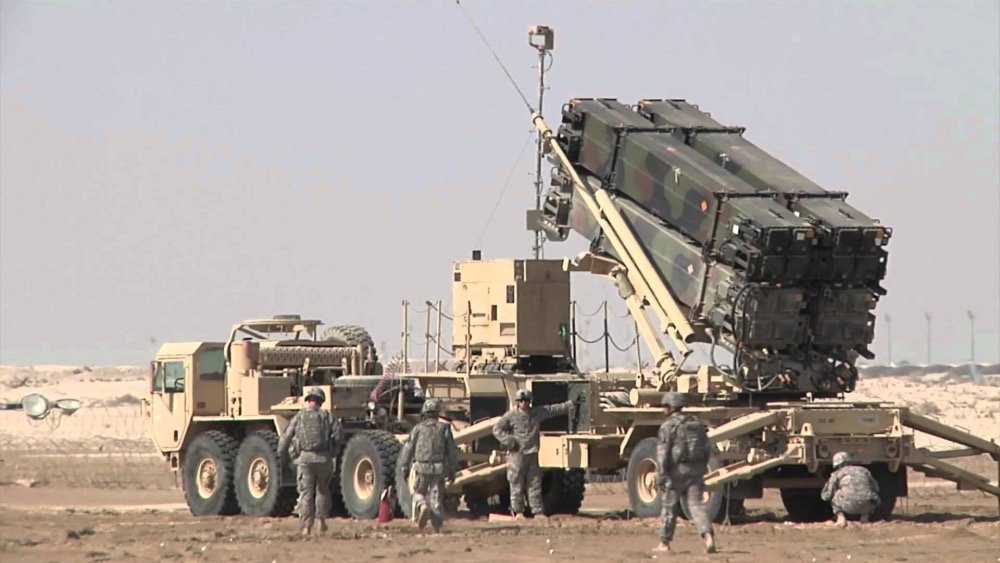By PAUL MCLEARY
THE PENTAGON: The Trump administration is shipping more air defense weapons to Saudi Arabia in response to the devastating Sept. 14 drone and cruise missile attack on a major oil facility there. But it’s not clear if the new hardware — a battery of Patriot missile launchers, 200 more troops, and four 360-degree Sentinel radars — will be the best defense against the next attack if it follows a similar pattern. The problem is that existing US systems are not designed to stop that kind of low-flying, relatively inexpensive threat.
In a statement, Pentagon spokesperson Jonathan Hoffman said the deployment “will augment the kingdom’s air and missile defense of critical military and civilian infrastructure.” The Pentagon has tried to enlist allies to send more assets to the region, though no firm commitments have been made yet. “Other countries have called out Iranian misadventures in the region,” Hoffman noted, “and we look for them to contribute assets in an international effort to reinforce Saudi Arabia’s defense.”
The US will also put two more Patriot batteries along with a Terminal High Altitude Area Defense system (THAAD) on standby for rapid deployment.
The existing Saudi radars are only able to “look” in one direction at a time, and they’re usually pointed south to defend against Houthi missile attacks from Yemen — leaving flight lines from Iran and Iraq mostly exposed. American and Saudi officials have yet to provide enough details to pinpoint where the swarm came from, but the Sentinel radar, while fairly short-ranged, constantly rotates to watch for threats from all directions. It could also be mounted in an elevated position in order to “see” low-flying threats that would normally be hidden behind the horizon.
So the new radars would likely be able to detect incoming drones and cruise missiles. But seeing isn’t shooting, and these new, low-flying threats are not only difficult to see, but tricky to hit. The Patriot in particular is designed to shoot down high-altitude targets like ballistic missiles (e.g. the Iraqi Scud) and jet aircraft, not low-altitude targets like most cruise missiles and drones. What’s more, each Patriot missile costs about $3 million, more than most cruise missiles, let alone drones, which can cost a few hundred dollars. The Army’s other major missile defense system that can be deployed abroad, THAAD, is even more expensive and even more optimized against high-altitude targets.
The fact that the US and Saudi Arabia, which has spent hundreds of billions on American military gear over the decades, have been caught flat-footed by the strike has sent alarm bells ringing among missile defense experts.
“We’ve seen this coming,” said Tom Karako, director of the Missile Defense Project at the Center for Strategic and International Studies, citing Russian drone use in Ukraine, Iranian drones in Syria, and advances in both drone and cruise missile technology worldwide. “This is here. It’s been here,” but governments have done relatively little to meet these new threats, he said, and “haven’t been preparing to go after not only UAS [drones] but cruise missiles.”
Earlier this week, the Pentagon’s policy chief, John Rood, said NATO isn’t prepared to fend off a Saudi-style attack, or even the kind of warfare Russia has been practicing in Ukraine, where drones are used as artillery spotters. Rood said the threats from such weapons and tactics have developed faster than NATO’s ability to rework missile defense and radar systems to detect smaller, faster-moving objects. “As part of our investment priorities we have to shift as an alliance where we’re putting our level of effort if you will, to put a little more emphasis in that area.”
The US, Germany, France and the UK have all blamed the attack on the Abqaiq oil facility on Iran, and US and French analysts are in Saudi now pouring over pieces of debris to pin down exactly what hit the facility and where they came from.

Patriot missile launch
Patriots everywhere
The new deployment is just the latest in a long line of Patriot systems being sent to hotspots overseas, making the units that operate them some of the most deployed groups in the Army.
The threats from drones and cruise missiles has caused the Army to fast-track a number of projects over the past year to meet the threat, but the work is far from complete, meaning Patriots remain the coin of the realm.
That has led to some awkward moments, like the move last year, ordered by then-Defense secretary Jim Mattis, to pull four Patriots out of Jordan, Kuwait and Bahrain in order to bring them home for refit and modernization. At the time, the move was also said to signal the changing strategic calculus within the Pentagon as policymakers said they were shifting Washington’s gaze from the messy Middle East to more pressing issues in the Pacific to meet the challenge presented by China.
Those plans changed a bit under the Trump administration’s “maximum pressure” campaign against Iran after the US unilaterally withdrew from the Iranian nuclear deal last year, and have led to new Middle East deployments. In May, the Pentagon sent approximately 1,500 US troops along with a Patriot battalion to the region to defend against missile threats, along with additional intelligence, surveillance, and reconnaissance aircraft.
Around the same time, the aircraft carrier USS Abraham Lincoln canceled a planned port visit in Croatia to steam for the Mideast. The ship is currently in the North Arabian Sea, and there’s talk of extending Lincoln’s deployment if the USS Harry S. Truman, which has been hobbled by electrical issues, is unable to deploy.

USS Abraham Lincoln transits the Strait of Gibraltar.
The new Patriot deployment will continue to stress the Army’s Patriot battalions, however. “We need to be careful about throwing our scarce Patriots and THAAD resources around the world chasing every missile threat that our adversaries want to pop up,” Karako said. Continued deployments could threaten the ability to execute the Army’s long-term air missile defense plan, he said, since the systems and crews are unable to come home and refit.
Despite some failures, there’ve also been some notable recent successes against small drones. Marines aboard the USS Boxer recently knocked down at least one Iranian drone in the Strait of Hormuz by using an electronic warfare system to jam the drone when it came within 1,000 yards of the ship. But in a sign of how new and ad hoc US drone defenses are, the jammers weren’t part of the ship’s usual equipment. Instead, they are mounted on a light truck — a dune-buggy-like Polaris MRZR — normally for land operations. To defend their ship, the Marines took the crude expedient of parking it on the deck.
The Army has also been working on a variety of ways to knock low-flying drones and cruise missiles out of the sky. That includes lasers — which use electricity instead of ammunition and in theory can take down drones for just pennies a shot. The Army’s also urgently fielding an anti-aircraft variant of its 8×8 Stryker vehicle, equipped with machineguns, Stinger missiles, and Hellfires. It’s overhauled a larger and longer-ranged system, IFPC, to focus on the cruise missile threat. Congress has meanwhile order the service to buy the Israeli Iron Dome anti-rocket system as a stopgap.
But none of these defenses is yet in service. That leaves the US — and countries like Saudi that buy American weapons — with a lot of protection against high-altitude threats but a glaring gap at low altitudes.

No comments:
Post a Comment